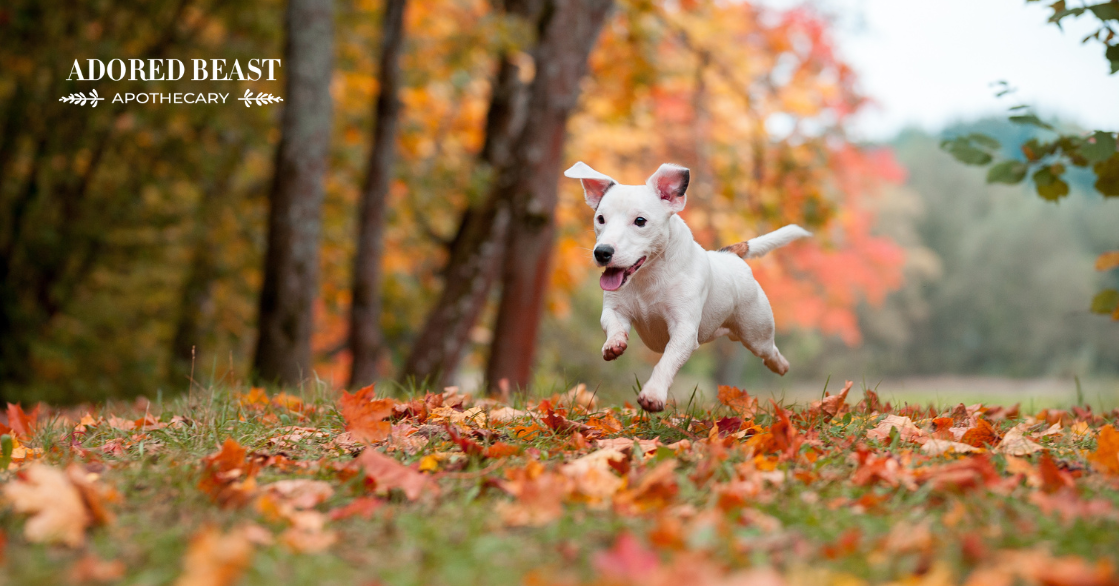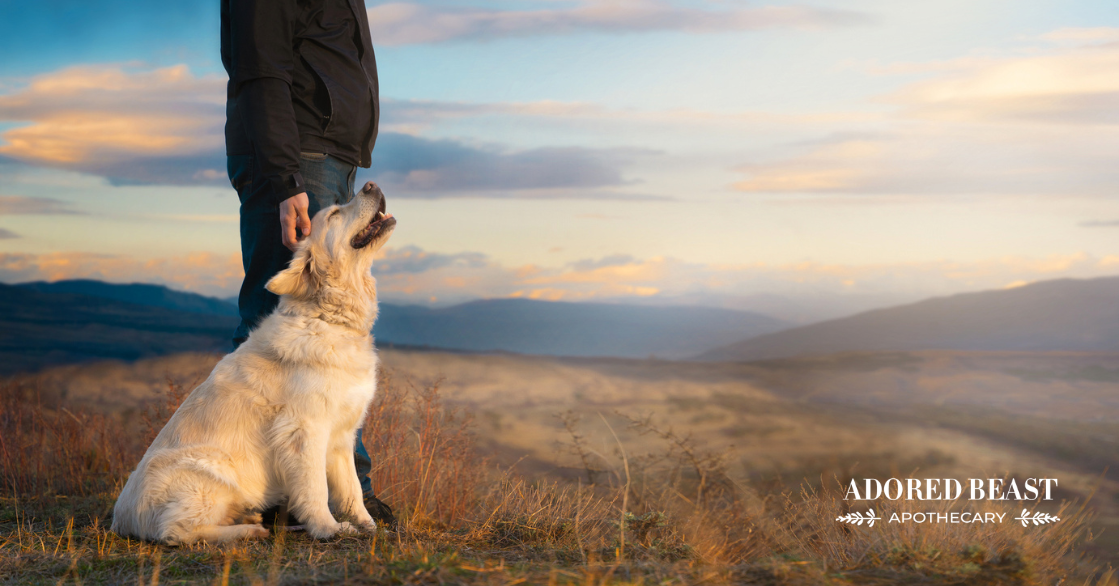When your pet goes to the vet and receives a scary diagnosis, it’s vital to be knowledgeable to make better decisions with less fear when facing options given by your vet. Anemia in dogs is one of those diagnoses; it may send you into a panic when you get the diagnosis, and you may make a snap decision if you don’t know how to manage this condition properly.
But that’s not helpful for you or your animal.
Let’s explore this disease state and learn how to manage it holistically.
What is Anemia in Dogs?
Anemia in dogs (any animal in fact), simply put, is a lower-than-normal amount of red blood cells or a dysfunction of red blood cells. Red blood cells are vital to life. Their most important function is to move oxygen throughout the body and transport carbon dioxide out of the body. Red blood cells are created within the bone marrow, and they are the most numerous cells in the body – there are trillions of red blood cells within your dog at any given moment! The body produces red blood cells on a constant basis. In dogs, their lifespan is around 110-120 days, while in cats, that number is lower, at about 65-75 days.
The term “RBC” or Red Blood Cells refers to your dog’s total amount of red blood cells. Hemoglobin is the term that describes the protein inside the RBCs that bind oxygen. Hemoglobin is rich in iron, which gives it the red color we associate with blood. This is why iron supplements are often a go-to to treat anemia.
Believe it or not, the kidneys also play a role in red blood cell production and release. They are responsible for guiding the production of RBSs via hormones sent to the bone marrow. This is also why dogs with kidney failure often have anemia, as kidney function is impaired.
Symptoms of Anemia
Symptoms usually lead to a diagnosis, and that is the case with anemia, as symptoms can be varied and noticeable. These symptoms include:
- Lethargy/Tiredness/Weakness: This is due to a lack of oxygen flowing through the body’s tissues, which causes low energy and mood.
- Pale gums: Due to the lack of RBCs, gums that would usually appear deep pink in colour will appear pale and often are tacky in texture when touched.
- Deceased appetite: With iron deficiency anemia (IDA), altered hormone levels play a crucial role with high leptin (a satiety hormone) and low ghrelin (a hunger hormone). Additionally, IDA may lead to central hypothalamic ghrelin resistance, resulting in elevated ghrelin levels that fail to stimulate appetite. Iron also activates the cAMP-responsive element binding protein (CREB), which represses leptin transcription. Together, these factors contribute to appetite loss in anemia.
- Increased respiratory rate: Anemia causes a faster respiratory rate because the body compensates for reduced oxygen-carrying capacity. With fewer red blood cells and less hemoglobin, the respiratory system increases breathing rate and depth to enhance oxygen intake and delivery to tissues.
- Increased heart rate: Like the respiratory system, anemia can cause a faster heart rate as the body attempts to compensate for decreased oxygen levels. With fewer red blood cells or lower hemoglobin, the heart pumps more quickly to ensure adequate blood flow and oxygen delivery to tissues. This increased heart rate helps meet the body’s oxygen demands despite the reduced oxygen-carrying capacity of the blood.
- Pica: Anemia in dogs can lead to pica (craving non-food items) mainly due to nutritional deficiencies, especially iron. Anemic dogs may instinctively seek out these items to compensate for missing nutrients or due to discomfort related to their condition.
- Weight loss: Anemia can cause weight loss due to fatigue and decreased physical activity, making it harder to maintain routines. It may also reduce appetite and lead to nutrient malabsorption. Additionally, the body’s increased metabolic demands can result in the breakdown of fat and muscle for energy, further contributing to weight loss.
How Vets Diagnose Anemia
When a dog displays one or several of the above symptoms, a veterinarian will first conduct an exam and draw blood for analysis. Almost all veterinarians have a blood analyzer in their office to deal with emergency situations quickly. The exam can quickly evaluate gum colour, mucous membrane response time (how long it takes for blood to rush back to the gums when pressed), heart rate, and respiratory rate. The bloodwork will instantly confirm the vet’s suspicion of anemia. Normal RBC counts are measured by the microliter (since pets have trillions of them, it’s easier to measure in a smaller unit).
- Dogs: Normal RBC: 5.7–8.5 x106/µL
- Cats: Normal RBC: 6.9 – 10.1×106/µL
- Horses: Normal RBC: 6.6 – 9.7×106/µL
Knowing your pet’s baseline RBC level is essential. This means doing regular (at least annual) bloodwork to understand what’s normal for your pet. That way, in a time of crisis, your veterinarian can make a better judgment call as to what is low for your pet.
Conventional Management
The conventional treatment protocol for anemia will depend on the type. If the immune system is acting inappropriately (autoimmune illness – often associated with over-vaccination), then a corticosteroid like prednisone may be administered. This steroid will be given at a dose intended to suppress the immune system so that, hopefully, the bone marrow will push out more RBCs. This comes with several negative side effects, such as liver damage, excess thirst, hunger panting, restlessness, and agitation.
If anemia is due to toxin exposure, such as rat poison, pharmaceutical levels of vitamin K1 will be given to promote the production of RBCs. Although side effects of K1 are rare, they can include allergic reactions, as well as cardiac and blood pressure problems.
If a parasite is the cause, deworming medications like fenbendazole may be the choice for treatment. These medications will kill whatever parasite is in the body. Still, they will also be damaging to your dog’s gut microbiome, which is a vital part of their immune system and inflammatory response.
If infection is the culprit, your vet will prescribe antibiotics like doxycycline. Like dewormers, antibiotics have negative consequences, and they are often more detrimental to the microbiome. However, if the condition is life-threatening, these may be critical. Thankfully, after antibiotics, there are lots of ways to help rebuild a damaged microbiome – and you’ll find them in this post!
Long-term nutritional deficiencies, like a lack of B12 or iron in the diet, can also cause anemia. If this is the suspected cause, supplementation with vitamins and minerals like B12, iron, and folate will be given. These are obviously safer treatment options with less serious side effects.
How to Manage Anemia in Dogs Holistically
Understanding the root causes of disease is essential, as this is vital in understanding how to manage any disease from a holistic (whole body) perspective. Since anemia in dogs can be multi-factoral in the cause, as discussed above, it’s important to try to nail down the cause before holistically managing it.
There are several key compounds to help build red blood cells naturally:
1. Vitamins
- B-vitamin complex with folate: Vitamins, especially B12, are essential for helping to produce RBCs, especially if the diet is lacking B vitamins due to malnutrition.
- Iron: Since iron is a vital part of RBCs, supplementation with it will help the body more efficiently produce RBCs.
- Vitamin C: Vitamin C is key to helping your pet’s body absorb iron. Good sources of whole-food vitamin C include citrus fruits, tomatoes, and cruciferous veggies like broccoli.
- Vitamin K1: This helps the body produce clotting factors so the pet doesn’t bleed excessively.
- Copper: Copper is critical to help RBCs obtain iron.
- Vitamin E: Helps with the formation of RBCs and helps to prevent clotting. Food sources include nuts like sunflower seeds, olive oil, spinach, and kale.
2. Whole Foods/Herbs:
- Nettle: A great whole food source of Iron and Vitamin C.
- Dandelion: Protects RBC membranes from injury and free radical damage.
- Spirulina: Increases hemoglobin levels, which are essential for RBC formation and oxygenation, by being high in iron.
- Burdock: Burdock helps to clean and purify the blood, which may increase hemoglobin levels. It also helps protect the liver, which is an important tool in cleansing the bloodstream of dead cells and impurities.
- Astragalus: Flavanoids found in Astragalus help regulate erythropoietin (the hormone secreted by the kidneys that increases the rate of production of RBCs). Astragalus also contains polysaccharides, which help red blood cells recover faster.
A diagnosis of anemia in dogs can feel worrisome at first, but with the proper care and attention, many dogs can still enjoy long, healthy, and joyful lives. By understanding the root cause, keeping a close eye on their condition, and working closely to manage symptoms, you’re taking the best steps to support your dog’s heart and health. Using whole food supplements to support them holistically is important to prevent future problems and mitigate damage caused by conventional treatments.












